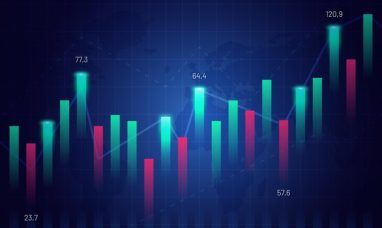In a welcome change of pace, Wall Street is showing signs of market stability, following weeks of intense volatility driven by escalating trade tensions. On Tuesday morning, the S&P 500 edged up 0.2%, suggesting a quieter tone as investors caught their breath.
The Dow Jones Industrial Average climbed 44 points, or 0.1%, and the Nasdaq Composite Index posted a modest gain of 0.3%. While these aren’t dramatic moves, the calm on Wall Street is a notable shift from the whiplash trading sessions of late.
Signs of Market Stability in the Bond Market
Perhaps the most encouraging sign of market stability came from the U.S. bond market. After sharp movements the previous week, the yield on the 10-year Treasury held steady at 4.38%. It had surged as high as 4.48% just days earlier, stoking fears that investors were losing confidence in U.S. government debt as a safe haven.
Bond yields typically rise when prices fall, and the recent volatility had sparked concerns about a potential shift away from U.S. Treasurys. The fact that yields are leveling out suggests investors may be regaining some trust in traditional assets.
U.S. Dollar Holds Firm Amid Trade War Concerns
The U.S. dollar, which had slipped last week on fears that the ongoing trade war was undermining its safe-haven status, also appeared to stabilize. The greenback gained against the euro and Swiss franc, while slightly losing ground against the British pound. Again, this points to a possible return to market stability—at least for now.
Big Banks Lead Modest Gains
Financial stocks helped buoy Wall Street, with Bank of America (NYSE:BAC) jumping 3.9% after beating analyst expectations for quarterly profit. Like many of its peers, Bank of America has benefited from volatility in the equity markets, particularly through its trading division.
Citigroup (NYSE:C) also reported better-than-expected earnings and saw its shares rise 2.3%. These gains highlight how large financial institutions are leveraging recent market turbulence to their advantage, potentially offering more signs of stability on Wall Street as the sector steadies.
Boeing Pressured by Chinese Trade Retaliation
While the overall market remained calm, not all stocks shared in the gains. Boeing (NYSE:BA) fell 1.4% after reports that Chinese authorities instructed airlines to stop taking deliveries of its aircraft and halt equipment purchases from U.S. aerospace firms. This move underscores the lingering risks of the ongoing U.S.-China trade conflict.
Even so, the broader market didn’t react with the kind of sharp downturn seen in recent weeks. This muted response could be further evidence that investors are adjusting to trade-related news and may signal growing market stability.
Global Markets Follow U.S. Lead
Markets across Europe and Asia mirrored the more relaxed trading mood. In Europe, Germany’s DAX gained 1.1%, and London’s FTSE 100 rose 0.9%. In Asia, automakers led the charge, with Japan’s Nikkei 225 climbing 0.8% and South Korea’s Kospi up 0.9%.
China’s markets were more reserved. The Hang Seng Index in Hong Kong rose 0.2% after a volatile session, and Shanghai’s Composite Index edged up 0.1%. Chinese leadership has been attempting to project confidence and economic resilience during its diplomatic outreach across Southeast Asia.
Final Thoughts: Is Wall Street’s Stability Here to Stay?
While Tuesday’s calm may prove temporary, it’s a refreshing pause after the intense back-and-forth of recent weeks. Investors are still wary of the U.S.-China trade standoff and the economic uncertainty it creates, but the subdued market movements suggest a new phase of cautious optimism on Wall Street.
For now, the focus is shifting from panic to patience—an encouraging sign for those hoping for lasting stability on Wall Street.
While uncertainties remain, this period of calm offers a much-needed opportunity for investors to reassess their positions and strategy moving forward. With global markets showing signs of steadiness, confidence may slowly begin to return to the financial landscape.
Featured Image – Depositphotos







